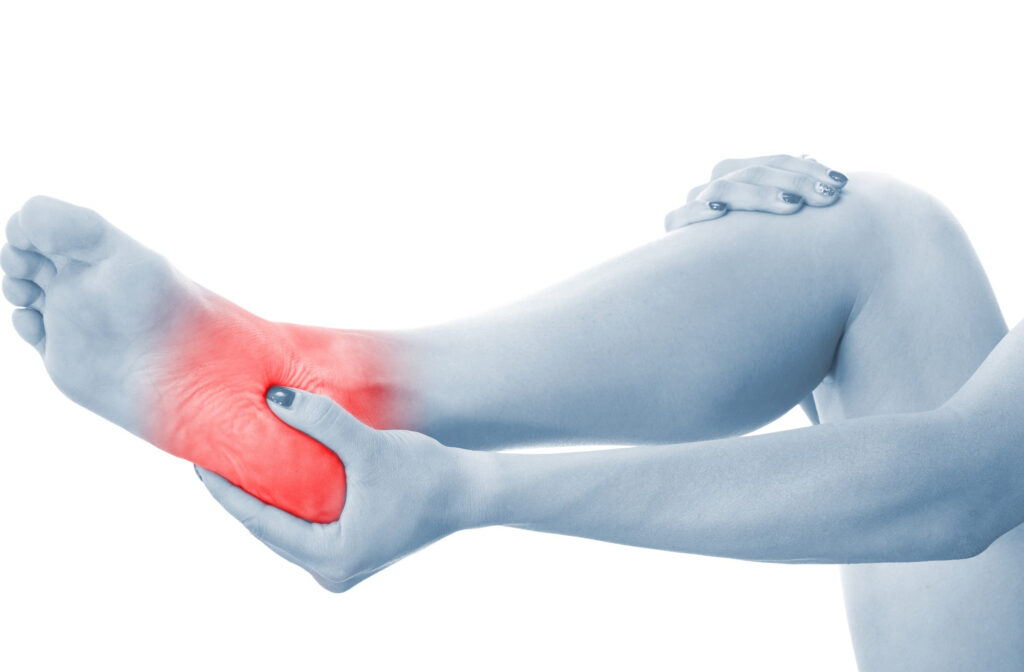
How You Can Manage Plantar Fasciitis
 What starts as an occasional sharp pain that suddenly develops in the heel of your foot can become a nagging, constant pain that causes you to limp or avoid walking altogether. If you have experienced this, I’m sure your healthcare team has looked into a plantar fasciitis diagnosis. At a glance, it can sound like a minor injury. Still, the long-term effects of this painful condition can seriously interfere with your quality of life.
What starts as an occasional sharp pain that suddenly develops in the heel of your foot can become a nagging, constant pain that causes you to limp or avoid walking altogether. If you have experienced this, I’m sure your healthcare team has looked into a plantar fasciitis diagnosis. At a glance, it can sound like a minor injury. Still, the long-term effects of this painful condition can seriously interfere with your quality of life.
What is plantar fasciitis?
Also described as “joggers heel,” it is one of the most common causes of foot pain. The plantar fascia is a flat bed of tissue or ligament that supports the arch of your foot by connecting your heel bone to the toes. If the plantar fascia becomes strained, it can become swollen, inflamed, and weak. This causes pain in the bottom of the foot when standing, walking, or running.
What are the symptoms and factors that increase the risk of development?
A sharp stabbing pain in the bottom of the heel of your foot simply categorizes plantar fasciitis. The pain worsens when you are bearing weight on it, particularly after prolonged rest periods. It is commonly reported that the most intense pain is felt upon getting out of bed in the morning or after long periods of sitting.
Ignoring plantar fasciitis may result in chronic heel pain; in some cases, if the plantar fascia continues to be overused, it can rupture.
Typical signs and symptoms of plantar fascia rupture include:
- A clicking or snapping sound.
- Significant local swelling.
- Acute pain in the sole of the foot.
Factors that increase the risk of plantar fasciitis:
- Certain types of exercise. Activities that place stress on the heel and attached tissue include long-distance running, gymnastics, dance, and aerobics. These can contribute to an earlier onset of plantar fasciitis.
- Excess weight. Being overweight puts extra stress on the plantar fascia.
- Age. Plantar fasciitis is most common between the ages of 40 and 60.
- Faulty foot mechanics. Being flat-footed, having a high arch, or abnormal walking pattern can adversely affect how weight is distributed when standing.
- Occupations that involve a lot of standing. Teachers, movers, physical laborers, and others who spend most of their work hours walking or standing on hard surfaces.
Getting a diagnosis
Tests are not necessary to diagnose plantar fasciitis. The diagnosis is made based on history and physical examination. We can examine your feet and watch how you stand and walk. We will also ask questions about:
- Your past health, including illnesses or injuries
- Your symptoms include pointing out where the pain is and what time of day your foot hurts most.
- How active you are and what types of activities you do.
- How long have you experienced this pain?
How do you treat plantar fasciitis?
Plantar fasciitis often occurs because of injuries that happen over time. With treatment, pain will reduce in a few weeks, but it may take a few months to a year for it to resolve completely.
Start by giving your feet a rest. Cut back on activities that hurt your foot, and try not to walk or run on hard surfaces. Properly fitting shoes with adequate support are always a suggestion. Stretching and strengthening exercises or specialized devices can also relieve symptoms and speed up recovery.
How can Chiropractic help?
- Exercises. We can instruct you in a series of exercises to stretch the plantar fascia and Achilles tendon and strengthen lower leg muscles to help stabilize the ankle and heel.
- Athletic tape. We may recommend using an athletic tape to support the bottom of your foot.
- Night splints. We may may also recommend wearing a splint that stretches your calf and foot arch while you sleep. This holds the plantar fascia and Achilles tendon in a lengthened position overnight and facilitates stretching.
- Orthotics. Finally we may prescribe arch supports or orthotics to help distribute pressure to your feet more evenly.
If you are experiencing heel pain and suspect you have plantar fasciitis, connect with your local chiropractor. Prompt treatment can help reduce the healing period and prevent prolonged periods of recovery. Let us help you to manage your plantar fasciitis.
5 Ways to Seamless Spring Cleaning
 Depending on where you are in the world, it seems like winter is on its way out. Here are five ways to ensure your spring cleaning is seamless. It is time to purge, crack open the windows, and get into those hard-to-reach corners. What’s spring cleaning without moving furniture and getting right in there? Am I right?
Depending on where you are in the world, it seems like winter is on its way out. Here are five ways to ensure your spring cleaning is seamless. It is time to purge, crack open the windows, and get into those hard-to-reach corners. What’s spring cleaning without moving furniture and getting right in there? Am I right?
We’ve been waiting many long months to reopen our homes to the fresh air, the sounds of nature, and the ability to clear out that built-up clutter. But injuries, particularly back injuries, are prevalent this time of year. The injuries brought on by lifting, twisting, and tripping are the ones that can have long recovery times, so how can you prevent them and make the most of your efforts?
1.Create a To-Do List
I have noticed with patients that the desire to do it all at once can leave them scrambling to complete the many tasks they have started. Adhering to a list and completing one task at a time will allow you to remain organized and sure of your surroundings. Working in one area of the home at a time will allow you to declutter and clean to completion comfortably. This makes it less likely to be tripping over cords or losing track of time. Lists will help you to remain on track and prevent confusion.
2.Warm-Up
You may think, “Warm up to clean the house?”.
Yes, bending, moving, lifting, and scrubbing can make you – at the very least – feel sore the next day. Injuries are more likely to occur if you have stiff muscles. Take a walk around the house, do a few simple stretches, and get your muscles warm and blood circulating to your extremities. Five minutes of stretching can prevent months of recovery from an injury, so please don’t skip this step!
3.Keep Your Abs Tight
Keeping your abs tight throughout the cleaning process will give you a great ab workout and help support your back while moving and lifting items. Many back injuries occur due to poor form when moving, lifting, or getting up from awkward positions. However, having a solid core will help prevent these injuries by keeping your musculoskeletal system firmly in place.
4.Use Your Legs, Not Your Back
Instead of bending at the waist, use your legs and squat or lunge! Squat while cleaning the bottoms of windows and mirrors. When cleaning the tub or picking items up off the floor, squat and bend at the knees when reaching for objects, and lunge while vacuuming or weeding the garden – both of which are great for your shoulders and arms.
5.Clean More Than Your Home
Spring cleaning isn’t just about the physical aspect of cleaning and purging either. Cleaning up your eating habits and routine is a great way to get back on track after the long winter months. Meal planning can make getting organized with your food easier.
Getting into a better sleeping routine is sure to have you feeling and looking better. Making movement a crucial part of your daily routine will help you keep your body agile and in shape – so you can proactively prevent injuries.
Your home is an excellent place to start, but remember to include the rest of your life. Make sure your chiropractor appointments are scheduled into your routine, and make fitness a part of this equation.
Enjoy Yourself
Enjoy yourself by putting on music or a podcast. Ensure you enlist family members to help with these tasks so you don’t become overburdened with house/yard work. Tasks can be easily divided and categorized per age group when involving children, especially if you can turn it into a game!
Life is better when it is decluttered, the fresh air flows, and we feel like we have accomplished something. Happy Spring cleaning!


 We can help treat falls on ice and slick surfaces, snow sports injuries, and other joint and muscle stiffness and pain, whether as your primary source of treatment or in accompaniment to traditional medicine.
We can help treat falls on ice and slick surfaces, snow sports injuries, and other joint and muscle stiffness and pain, whether as your primary source of treatment or in accompaniment to traditional medicine. Sore Neck or Back?
Sore Neck or Back?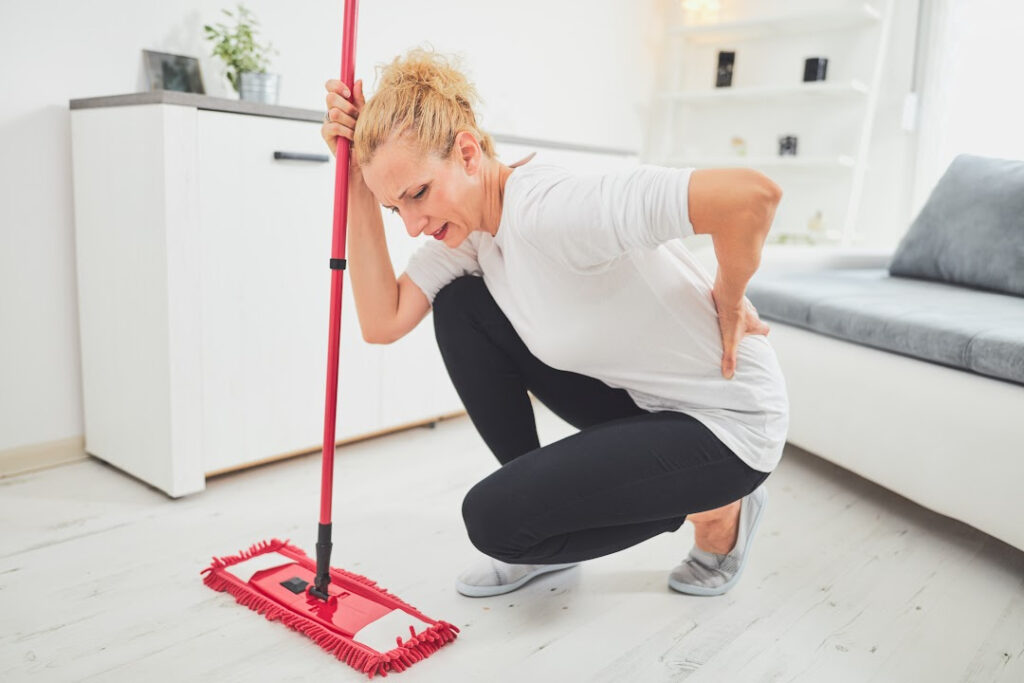
 The following explains how we can help treat femoroacetabular impingement.
The following explains how we can help treat femoroacetabular impingement. The good news is a Chiropractor can help alleviate many of the symptoms associated with spinal stenosis. The following explains what spinal stenosis is and how Chiropractors like myself can help treat it.
The good news is a Chiropractor can help alleviate many of the symptoms associated with spinal stenosis. The following explains what spinal stenosis is and how Chiropractors like myself can help treat it.
 The temperature is dropping, and the damp, cooler weather can mean many things to our bodies. The excitement of winter activities like ice skating and tobogganing begins. For some, there are winter fairs and markets. Others prepare for the holidays and spend time indoors with loved ones and warm blankets. Whatever your winter activity or inactivity, there is always a reason to ensure you regularly visit your us.
The temperature is dropping, and the damp, cooler weather can mean many things to our bodies. The excitement of winter activities like ice skating and tobogganing begins. For some, there are winter fairs and markets. Others prepare for the holidays and spend time indoors with loved ones and warm blankets. Whatever your winter activity or inactivity, there is always a reason to ensure you regularly visit your us.  Let someone know where you plan to hike. Tell someone where you’ll be and how long you plan to be out. Please share your location. It’s unlikely you will get lost, or things will go awry, but it is better to be safe than sorry. It is a quick and straightforward solution, especially when sharing your location and checking in with a friend or family member.
Let someone know where you plan to hike. Tell someone where you’ll be and how long you plan to be out. Please share your location. It’s unlikely you will get lost, or things will go awry, but it is better to be safe than sorry. It is a quick and straightforward solution, especially when sharing your location and checking in with a friend or family member.
 Every year, we see an influx of patients who have injured themselves while completing their annual fall yard cleanup. Pruning trees, cleaning gutters, raking leaves, and general bending and lifting can create a perfect environment for back injuries, strains, sprains, or falls. The general use of leaf blowers, rakes, ladders, and carrying heavy bags requires a thoughtful plan to prevent injuries, and you know, as Chiropractors, we like to focus on prevention!
Every year, we see an influx of patients who have injured themselves while completing their annual fall yard cleanup. Pruning trees, cleaning gutters, raking leaves, and general bending and lifting can create a perfect environment for back injuries, strains, sprains, or falls. The general use of leaf blowers, rakes, ladders, and carrying heavy bags requires a thoughtful plan to prevent injuries, and you know, as Chiropractors, we like to focus on prevention! Even if you are in a position to move around for some of the day, your body requires stretching. Long periods of sitting or standing will affect our circulation; this can cause a deterioration of muscle mass, ultimately affecting systems of your body.
Even if you are in a position to move around for some of the day, your body requires stretching. Long periods of sitting or standing will affect our circulation; this can cause a deterioration of muscle mass, ultimately affecting systems of your body. New year’s resolutions can be great. They also create a type of urgency that is challenging to maintain. When it comes time to create new habits or routines, the best way to do this is slowly. Managing your expectations is key. Start by going to the gym once a week for 30-45 minutes, or join a class. Building your motivation over time will allow you to develop the discipline you need to maintain new routines. As you already know, the more you workout, the better you feel and the more likely it is that will want to continue to feel good. The frequency will seemingly increase on it’s own, as will the progress you will see and feel in your body.
New year’s resolutions can be great. They also create a type of urgency that is challenging to maintain. When it comes time to create new habits or routines, the best way to do this is slowly. Managing your expectations is key. Start by going to the gym once a week for 30-45 minutes, or join a class. Building your motivation over time will allow you to develop the discipline you need to maintain new routines. As you already know, the more you workout, the better you feel and the more likely it is that will want to continue to feel good. The frequency will seemingly increase on it’s own, as will the progress you will see and feel in your body. 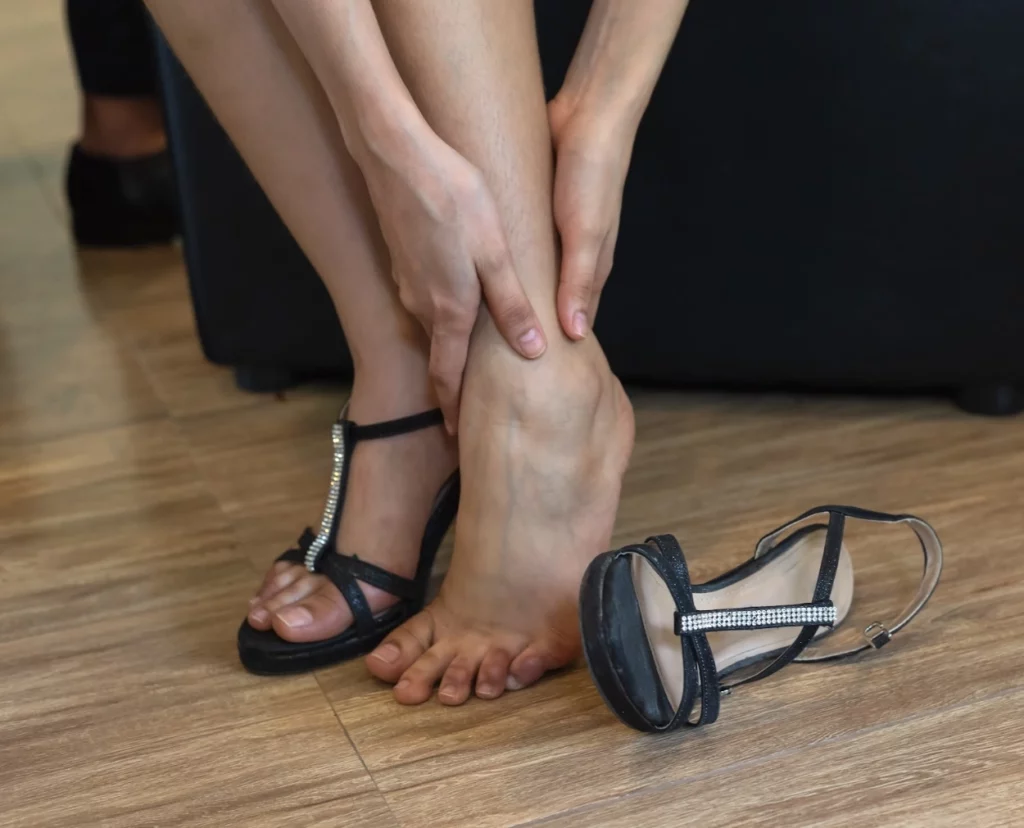
 Before you get out the heels for everyday living, having these five facts about heels is essential.
Before you get out the heels for everyday living, having these five facts about heels is essential.
 Remain as active as you normally would. Immediately following an adjustment is not the time to start a new sport or dive into a heavy workout, but remaining sedentary when you are an active person can cause your muscles to tighten. In other words, you can feel stiff if you don’t resume an average or moderate amount of movement.
Remain as active as you normally would. Immediately following an adjustment is not the time to start a new sport or dive into a heavy workout, but remaining sedentary when you are an active person can cause your muscles to tighten. In other words, you can feel stiff if you don’t resume an average or moderate amount of movement. Water activities can increase your heart health without too much friction on your joints, muscles, and ligaments—the paddling motion paired with the balance required to tone almost your entire body, particularly your core.
Water activities can increase your heart health without too much friction on your joints, muscles, and ligaments—the paddling motion paired with the balance required to tone almost your entire body, particularly your core.
 Some of the most common areas of relief through Chiropractic care include:
Some of the most common areas of relief through Chiropractic care include: Gardening can bring joy and healthy productivity to our lives, so I would never suggest eliminating it. Gardening season does arrive with increased incidents of neck strain and back injuries, mainly due to overexertion and repetitive movements.
Gardening can bring joy and healthy productivity to our lives, so I would never suggest eliminating it. Gardening season does arrive with increased incidents of neck strain and back injuries, mainly due to overexertion and repetitive movements.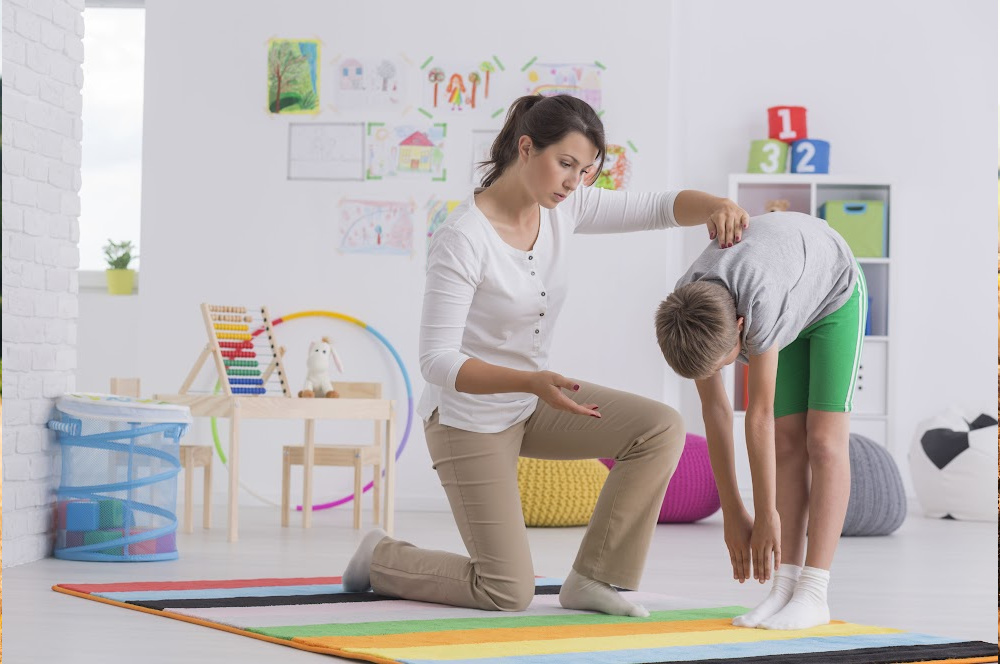
 How many of us were told to stand up straight when we were young? While it’s always a good idea to maintain proper posture, many people have the false idea that the spine is always straight.
How many of us were told to stand up straight when we were young? While it’s always a good idea to maintain proper posture, many people have the false idea that the spine is always straight.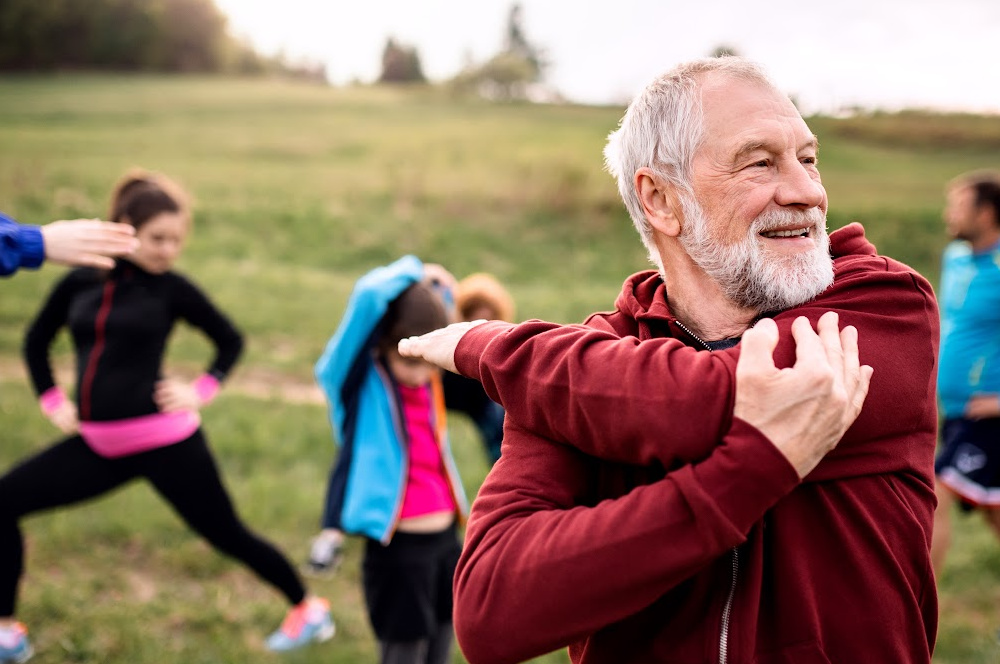 Physical activity is beneficial for everyone, even older adults that may feel limited in their abilities. Even if you’re not currently exercising as much as you would like to, there are exercises for every age and ability.
Physical activity is beneficial for everyone, even older adults that may feel limited in their abilities. Even if you’re not currently exercising as much as you would like to, there are exercises for every age and ability.